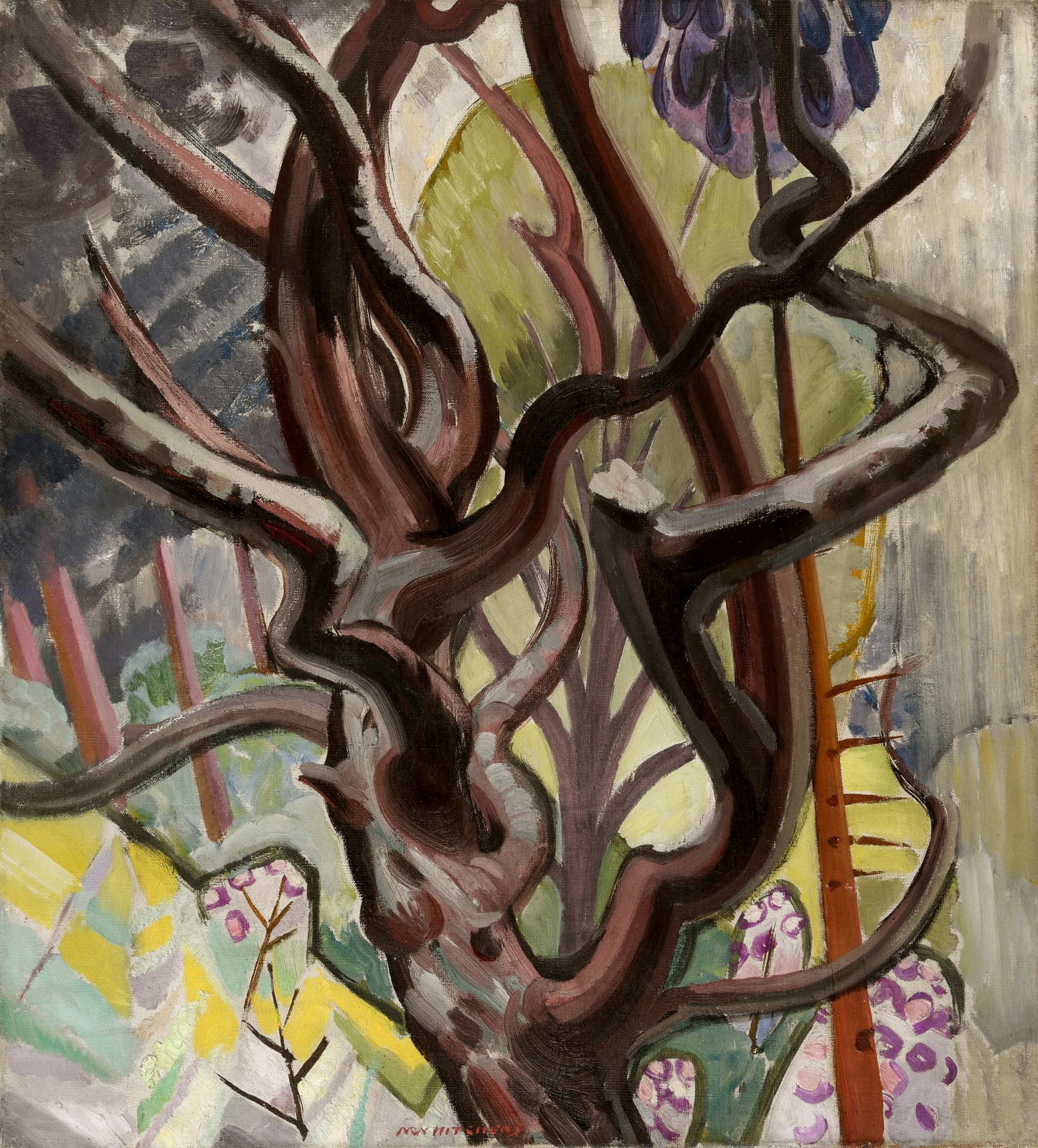Ivon Hitchens British, 1893-1979
The Pine Tree, 1929
oil on canvas
20 x 18 in / 50.8 x 45.7 cm
'The essence of my theory is that colour is space and space is colour'. - Ivon Hitchens
'Hitchens in West Sussex provides the most distinguished example of the profound personal identification of a painter with a special place, or landscape.' - Patrick Heron
Ivon Hitchens is widely regarded as being England’s greatest 20th century landscape painter; his work is represented in public art galleries worldwide. In the 1920s and 30s Hitchens was part of a core group of avant-garde artists living in London; working alongside artists such as Piet Mondrian, Barbara Hepworth, Henry Moore, Paul Nash and Ben Nicholson. A founding member of the Seven & Five Society which promoted abstract art, Hitchens eventually went his own way, having developed his own characteristic style that was a fusion of both abstract and figurative painting.
When a bomb exploded next to his Hampstead studio in 1940, Hitchens and his family decamped to the Sussex wilderness, near Petworth, moving into a gypsy caravan where he became immersed in the surrounding landscape. The early influence of Cèzanne and Matisse is perhaps most clearly observed in Hitchens’ early landscapes, in which his use of colour and handling of space can be traced back to the French Impressionists. The earthy colour landscapes of the 1940s evolved into vibrant colour and broad and fluid strokes.
'Hitchens’s sensuousness, his control of colour-resonance and his almost calligraphic, unfailingly rhythmic manipulation of pigment all stem direct from the Fauves. His spatial grammar, on the other hand – the fact that he conceives of forms in space in terms of a system of flat screens of colour lying one behind another – this is purely Cubist in origin.' – Patrick Heron
'Hitchens in West Sussex provides the most distinguished example of the profound personal identification of a painter with a special place, or landscape.' - Patrick Heron
Ivon Hitchens is widely regarded as being England’s greatest 20th century landscape painter; his work is represented in public art galleries worldwide. In the 1920s and 30s Hitchens was part of a core group of avant-garde artists living in London; working alongside artists such as Piet Mondrian, Barbara Hepworth, Henry Moore, Paul Nash and Ben Nicholson. A founding member of the Seven & Five Society which promoted abstract art, Hitchens eventually went his own way, having developed his own characteristic style that was a fusion of both abstract and figurative painting.
When a bomb exploded next to his Hampstead studio in 1940, Hitchens and his family decamped to the Sussex wilderness, near Petworth, moving into a gypsy caravan where he became immersed in the surrounding landscape. The early influence of Cèzanne and Matisse is perhaps most clearly observed in Hitchens’ early landscapes, in which his use of colour and handling of space can be traced back to the French Impressionists. The earthy colour landscapes of the 1940s evolved into vibrant colour and broad and fluid strokes.
'Hitchens’s sensuousness, his control of colour-resonance and his almost calligraphic, unfailingly rhythmic manipulation of pigment all stem direct from the Fauves. His spatial grammar, on the other hand – the fact that he conceives of forms in space in terms of a system of flat screens of colour lying one behind another – this is purely Cubist in origin.' – Patrick Heron
24
of
24
Join our mailing list
* denotes required fields
We will process the personal data you have supplied in accordance with our privacy policy (available on request). You can unsubscribe or change your preferences at any time by clicking the link in our emails.
